How to Grow Camellias
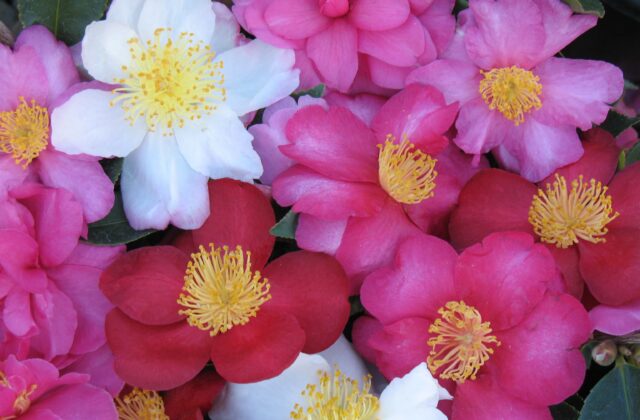
Introduction
Camellias, often hailed as the aristocrats of the garden, stand as emblematic symbols of elegance and grace. Understanding how to grow Camellias involves careful consideration of their specific requirements. From soil acidity to moisture levels, ensuring optimal conditions for their development. As members of the Theaceae family, these plants boast a rich heritage rooted in East Asian cultures, particularly in China and Japan. Revered for their exquisite blossoms and glossy foliage, Camellias have captivated gardeners and enthusiasts for centuries, their allure extending far beyond mere ornamentation.
With a diverse array of species and cultivars, Camellias offer a captivating palette of colors, shapes, and sizes, ensuring there’s a variety suitable for every garden. In addition to their aesthetic appeal, Camellias possess remarkable resilience, thriving in a range of climates and soil conditions. Whether you’re a seasoned gardener or a novice enthusiast, unlocking the secrets of how to grow Camellias can lead to a lifelong journey of botanical fascination and floral delight.
Camellia Species
Camellias offer a diverse range of options for your garden, each with its own unique characteristics and growing requirements.
Camellia Japonica
The Camellia japonica, commonly referred to as the Common Camellia, hails from Japan and China. It flourishes in its natural environment, showcasing vivid flowers in the late winter to early spring period, providing a burst of color when most plants are not in bloom. This plant thrives in partial shade and well-drained soil, demanding little maintenance after it takes root. Properly cared for, the Common Camellia can adorn a garden for generations, standing as a cherished element of the landscape.
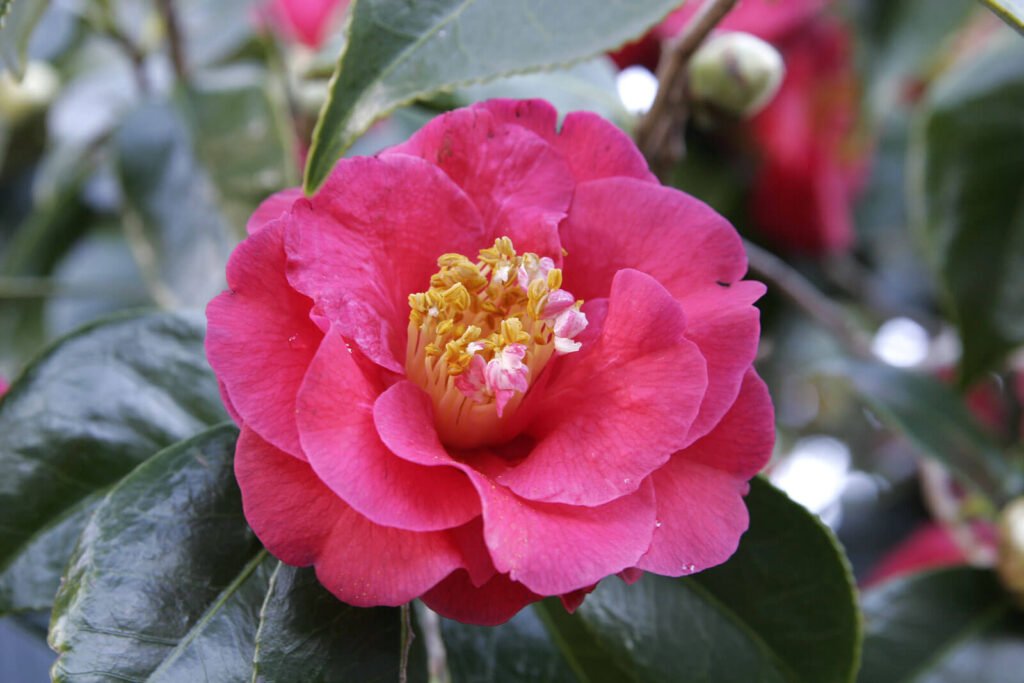
Camellia Sasanqua
Camellia sasanqua, originating from Japan, stands out with its petite leaves and delicate flowers, setting it apart from other Camellia species. Unlike its counterparts, this variety blooms during the fall season, creating a vibrant and colorful display just as many other plants are winding down. One of its remarkable traits is its tolerance to sunlight, making it a versatile option for hedges or elegantly trained against walls. A favored choice among gardeners, Camellia sasanqua impresses with its resilience and adaptability to diverse environmental conditions, adding a touch of grace and beauty to any garden space.
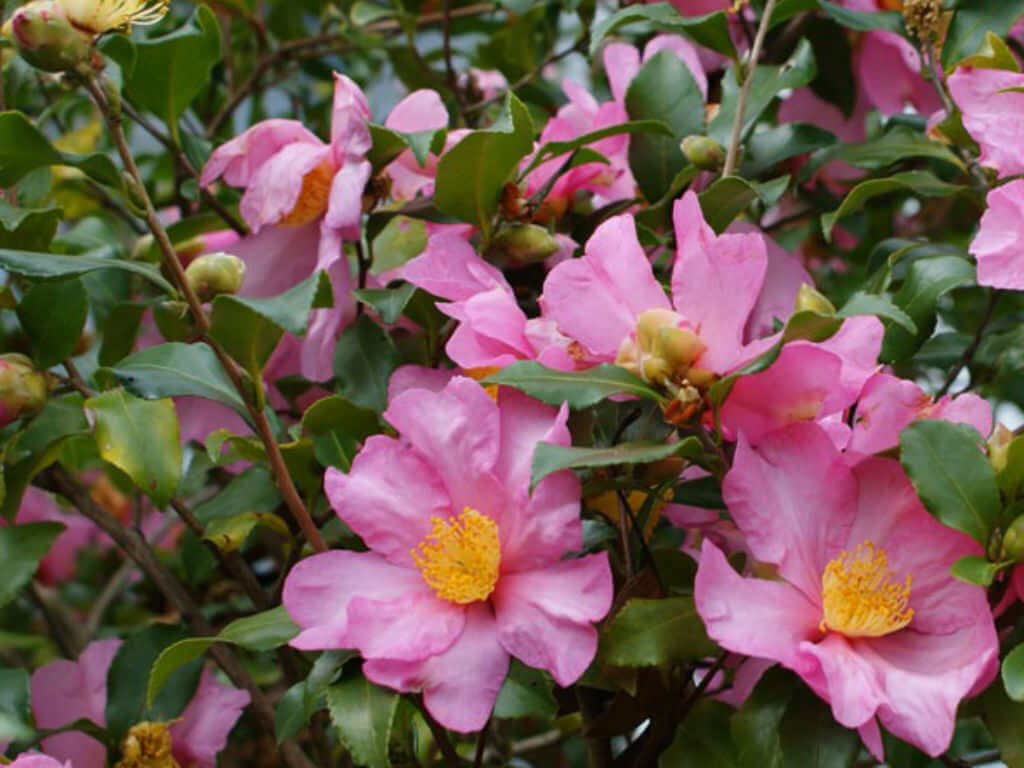
Camellia Reticulata
Originating from the Yunnan province in China, Camellia reticulata is renowned for its remarkably large flowers, which can span up to an impressive 6 inches in diameter. Unlike other Camellia species, this variety typically blooms later, gracing gardens with its stunning blossoms in the mid to late spring, thereby extending the flowering season in a truly remarkable manner. To truly showcase the magnificence of its blooms, Camellia reticulata thrives in acidic soil and requires protection from harsh winds. As a result of its striking appearance and impressive size, gardeners frequently utilize this species as a focal point or specimen plant, adding a touch of grandeur to any garden landscape.
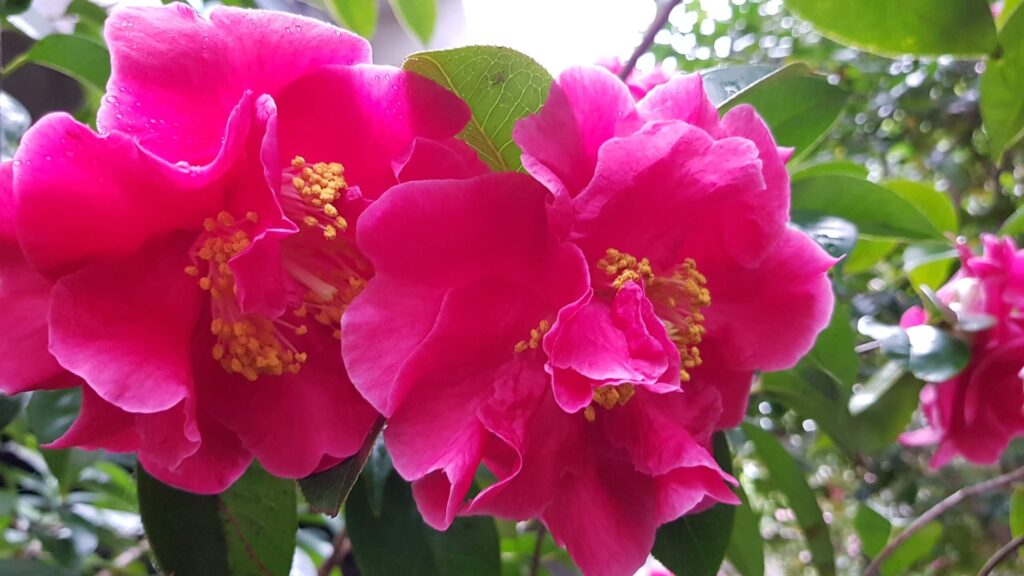
Camellia Sinensis
Camellia sinensis, commonly known as the tea plant, is a species of evergreen shrub or small tree native to East Asia. It is cultivated for its leaves, which are used to produce various types of tea, including green tea, black tea, white tea, and oolong tea. Camellia sinensis is prized for its caffeine content, antioxidants, and aromatic qualities, making it one of the most widely consumed beverages worldwide. Additionally, Camellia sinensis is sometimes grown ornamentally for its attractive foliage and small white flowers.
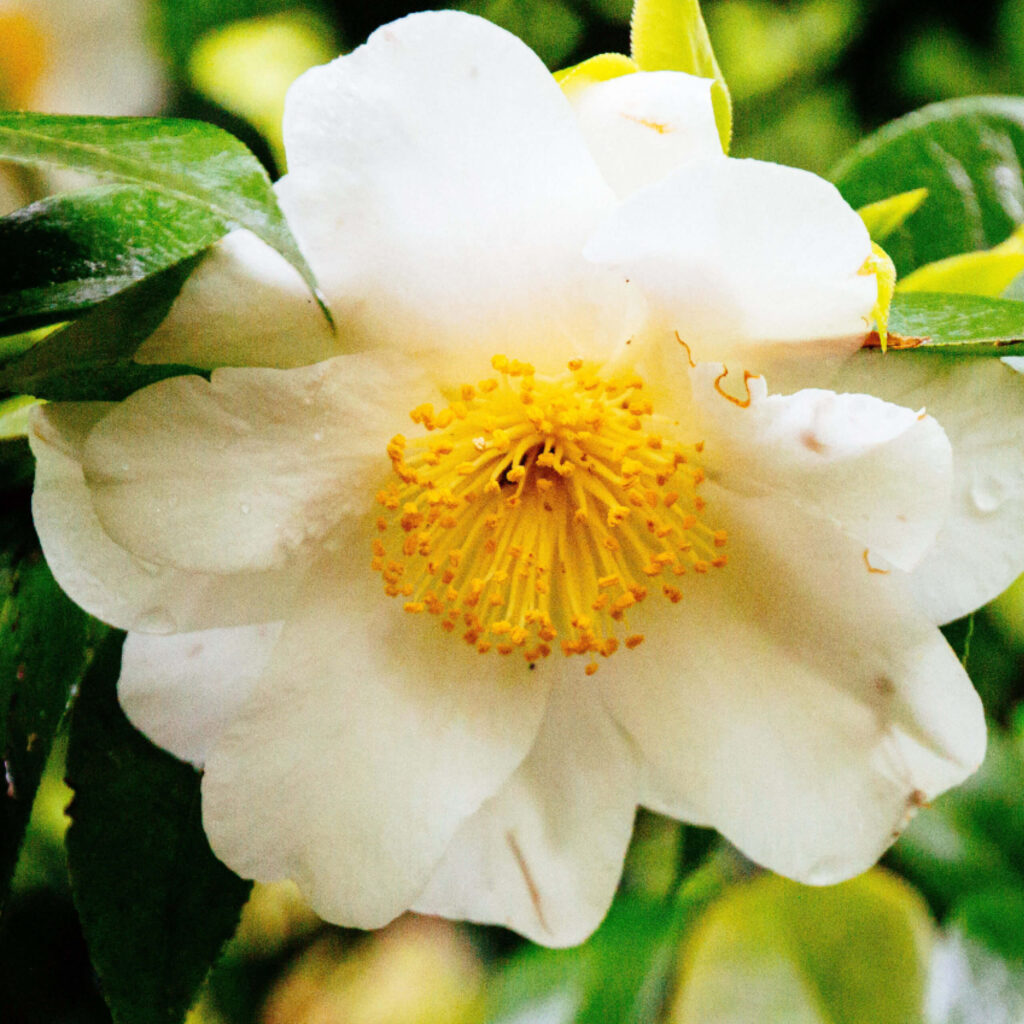
Camellia Hybrids
Camellia hybrids are the fascinating result of crossbreeding different species of camellias, leading to a diverse array of unique characteristics and appearances. These hybrids boast an impressive variety of colors, shapes, and sizes, making them incredibly popular among gardening enthusiasts. What’s truly remarkable is that camellia hybrids often inherit the best traits from their parent plants, resulting in enhanced disease resistance and an ability to thrive in various climates. Additionally, gardeners can delight in an extended blooming season with camellia hybrids, as they offer a diverse range of flowering times throughout the year, adding a captivating charm to any garden landscape.
Camellia x Williamsii
Camellia x williamsii, a beloved hybrid, is renowned for its exquisite semi-double or double flowers, showcasing a stunning array of colors that captivate the eye. This sought-after hybrid’s resilience against pests and diseases, coupled with its ability to thrive in partial shade, makes it a top choice among gardeners. Its compact growth habit is particularly admired, as it is perfect for smaller garden spaces or container planting, adding elegance to any setting. Additionally, the evergreen nature of Camellia x williamsii ensures that it graces garden landscapes with year-round visual appeal, making it a delightful and enduring addition to any garden.
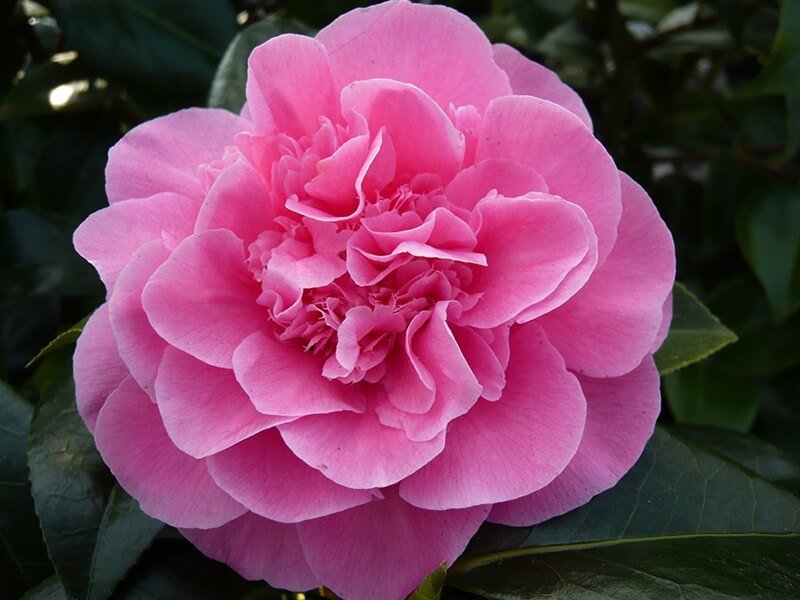
Camellia x Vernalis
Camellia x vernalis stands out for its early flowering period, gracing gardens with delicate blooms in late winter when few other plants are in bloom. This hybrid boasts remarkable cold tolerance, thriving in regions with harsh winters and frosty conditions. Gardeners can anticipate a profusion of delicate, fragrant flowers from Camellia x vernalis, adding an enchanting charm and vibrancy to the winter garden landscape. Moreover, the glossy evergreen foliage of this hybrid serves as an attractive backdrop, ensuring visual appeal even when the plant is not in bloom.
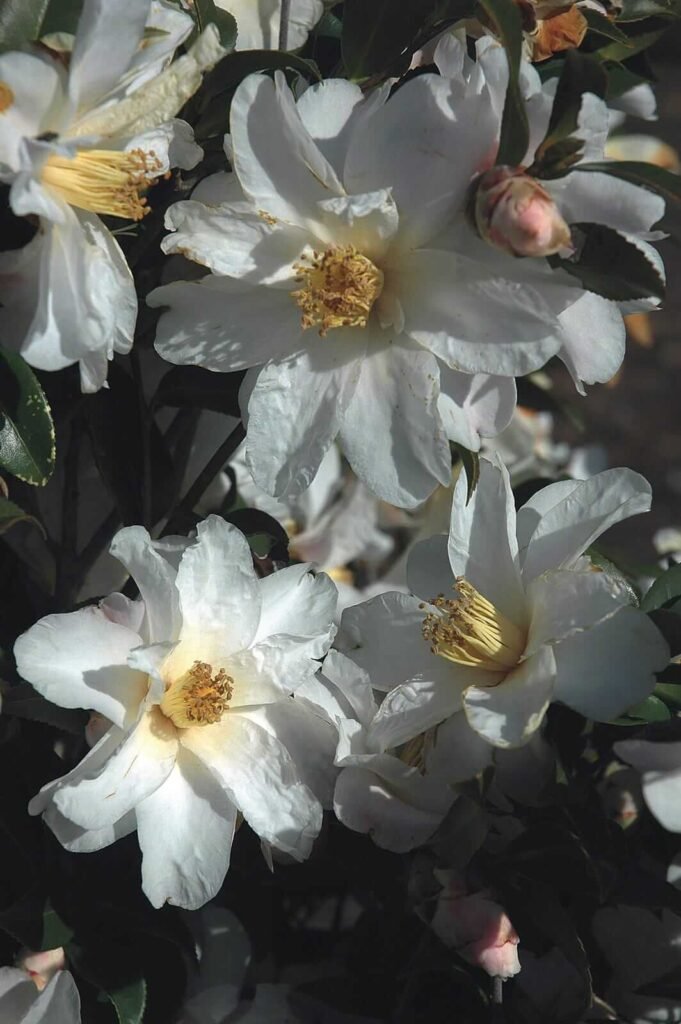
Camellia x Hiemalis
Camellia x hiemalis is highly regarded for its ability to thrive in various lighting conditions, making it a versatile option for landscaping. The resilience of this hybrid against heat stress is particularly admired by gardeners, as it requires minimal maintenance once it has established itself. Additionally, its compact growth habit and abundant production of small, charming flowers during the fall and winter seasons bring a vibrant cheer to garden spaces, adding color and life when other plants may be dormant or less colorful.
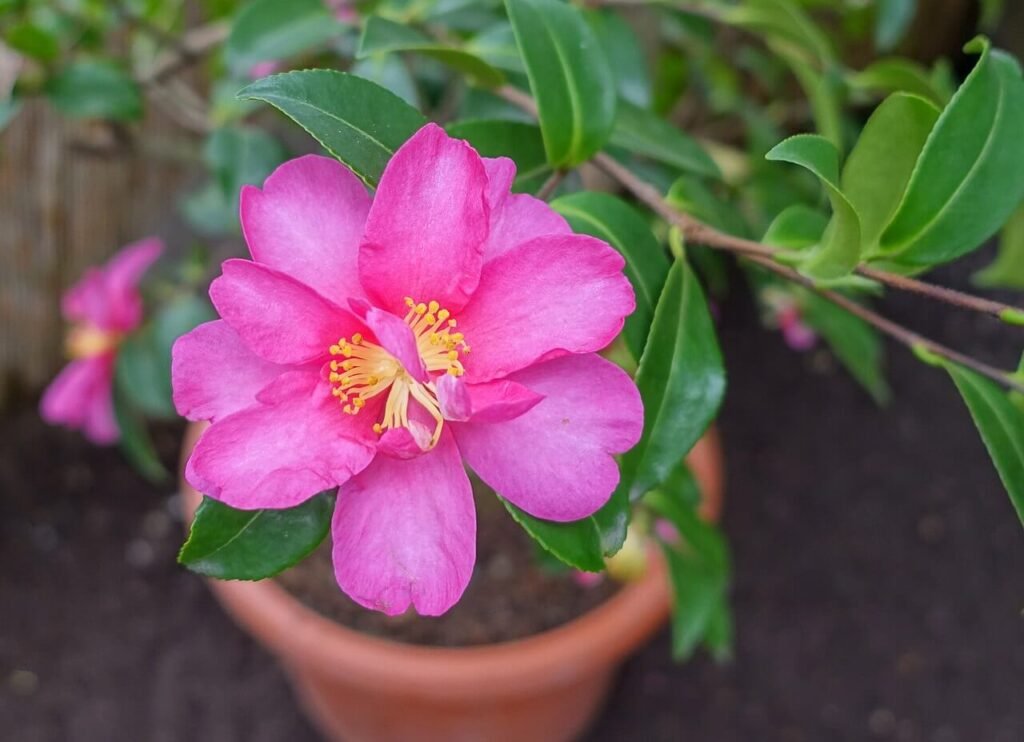
Popular Camellia Cultivars
The Pink Perfection camellia cultivar is truly a sight to behold, with its large, peony-like pink flowers that exude elegance and grace in any garden setting. Debutante, another beloved variety, showcases delicate, blush-pink double blooms, adding a touch of charm and enchantment to outdoor spaces. The Professor Sargent camellia variety is cherished for its stunning semi-double white flowers, accentuated by prominent golden stamens that create a captivating contrast. Lastly, Kramer’s Supreme garners admiration for its vibrant red, peony-form blossoms that bring a bold and captivating presence to gardens, adding a pop of vivid color and beauty. Each of these camellia varieties offers a unique and captivating visual display, contributing to the stunning variety of camellias available to gardening enthusiasts.
Pink Perfection
The Pink Perfection camellia cultivar is a versatile and cherished addition to any garden. With its preference for partial shade and acidic soil, it effortlessly thrives in woodland garden settings, adding an elegant touch to natural landscapes. Its ability to bloom in late winter through early spring brings a delightful burst of color when numerous other plants remain dormant, creating a captivating visual display. This variety’s compact growth habit and glossy green foliage not only make it a perfect option for container planting but also an exquisite focal point in smaller gardens. The Pink Perfection camellia’s graceful form and exquisite blooms also render it a beloved choice for traditional Japanese tea gardens, adding a timeless charm to these serene spaces.
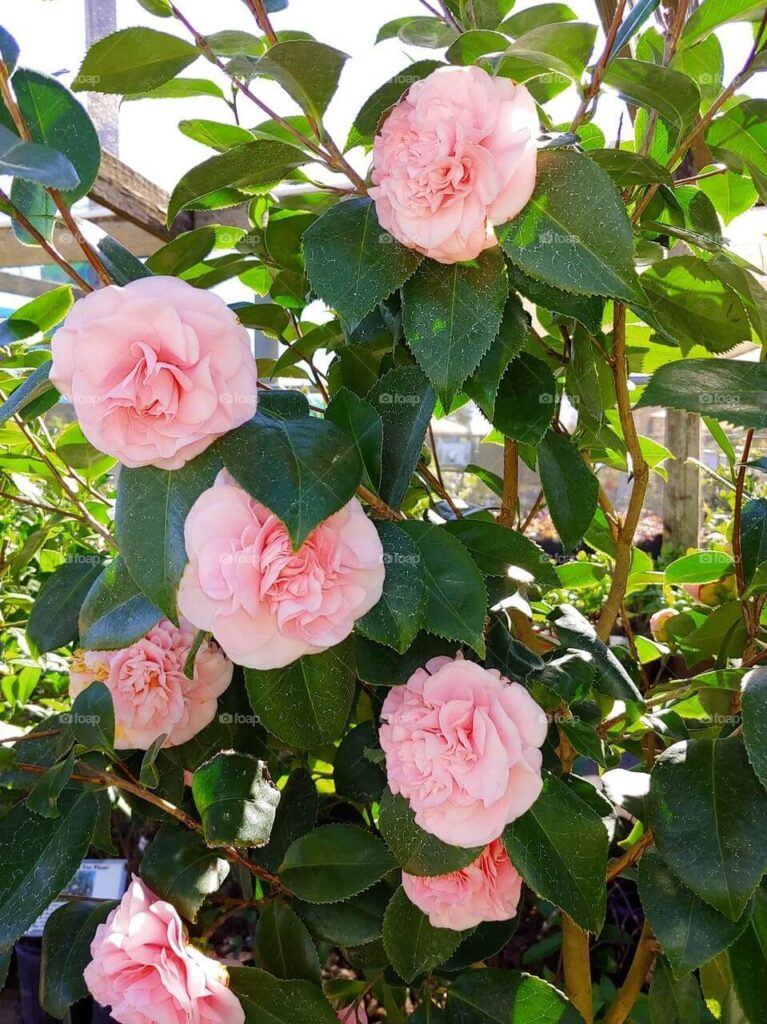
Debutante
Debutante camellias are highly valued for their robust growth and their ability to thrive in diverse climates, making them a perfect choice for a wide range of regions. The gentle pink blooms of this cultivar emit a delightful fragrance, enticing pollinators like butterflies to grace the garden with their presence. With attentive care and upkeep, Debutante camellias have the potential to develop into striking hedges or privacy screens, owing to their lush and dense foliage. Gardeners particularly cherish the prolonged flowering season of Debutante camellias, ensuring a continuous infusion of beauty into the surrounding landscapes.
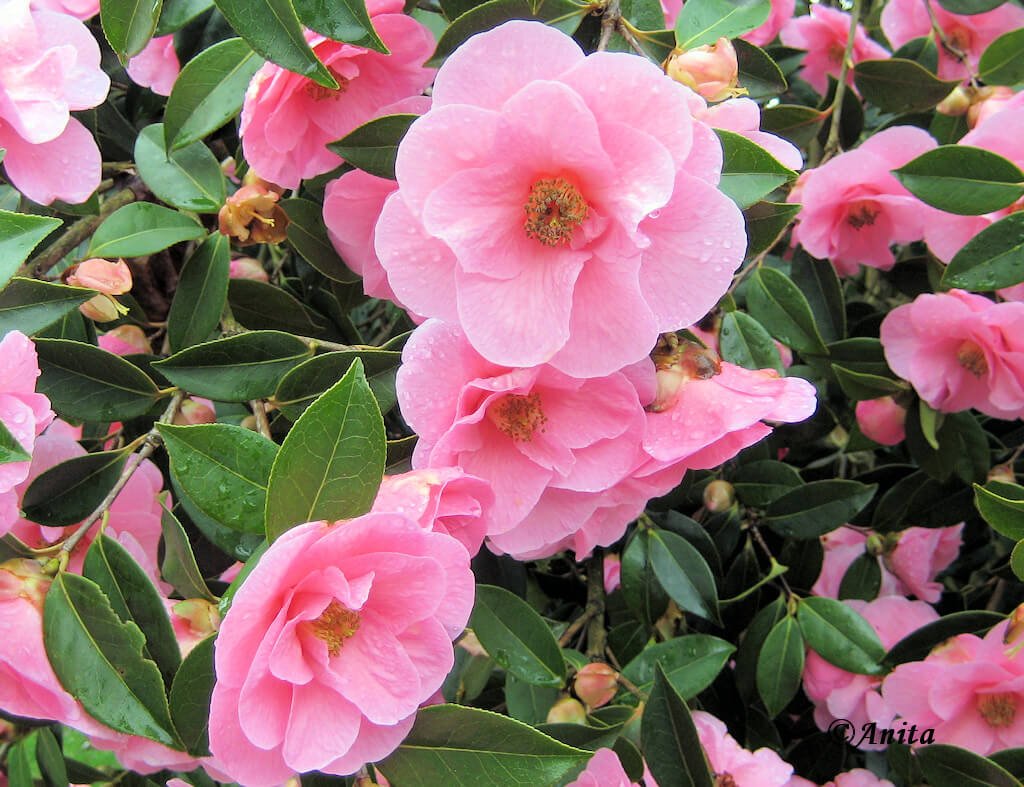
Professor Sargent
Revered for their resilience against pests and diseases, Professor Sargent camellias require minimal intervention for upkeep, making them a low-maintenance and hassle-free addition to any garden. The variety’s upright growth and dark green foliage create an elegant backdrop for its radiant white blossoms with golden accents, adding a touch of sophistication to outdoor settings. Whether adorning formal gardens or standing as standalone specimens, Professor Sargent camellias bring an air of grace and refinement to their surroundings, captivating the eye with their timeless beauty.
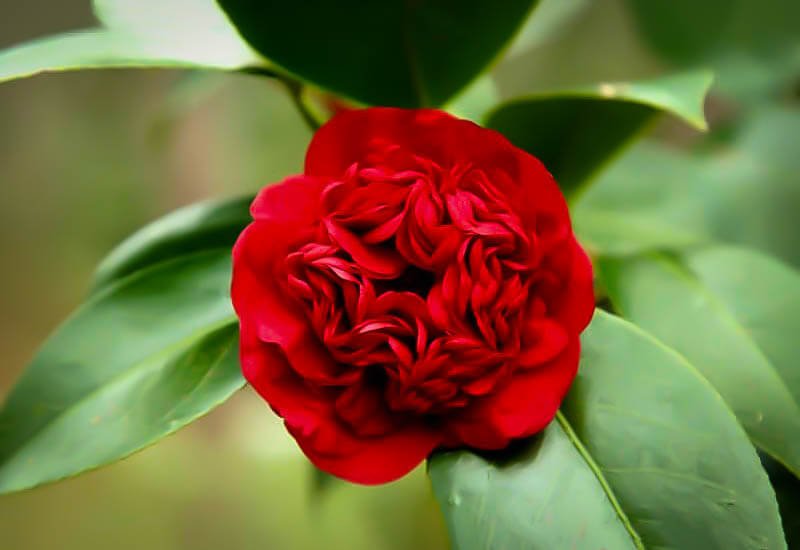
Kramer’s Supreme
Kramer’s Supreme camellias are highly valued for their remarkable cold tolerance, positioning them as excellent options for regions with cooler climates. The striking red flowers of this variety create a bold and captivating presence in winter landscapes, adding a burst of vivid color at a time when many other plants are either dormant or have faded blooms. Gardeners frequently utilize Kramer’s Supreme as accent plants or focal points in mixed borders, drawn to their ability to effortlessly catch the eye with their stunning display of color. The term ‘reliable’ aptly characterizes this cultivar, given its unwavering consistency in flowering and its remarkable adaptability to a wide range of soil types.
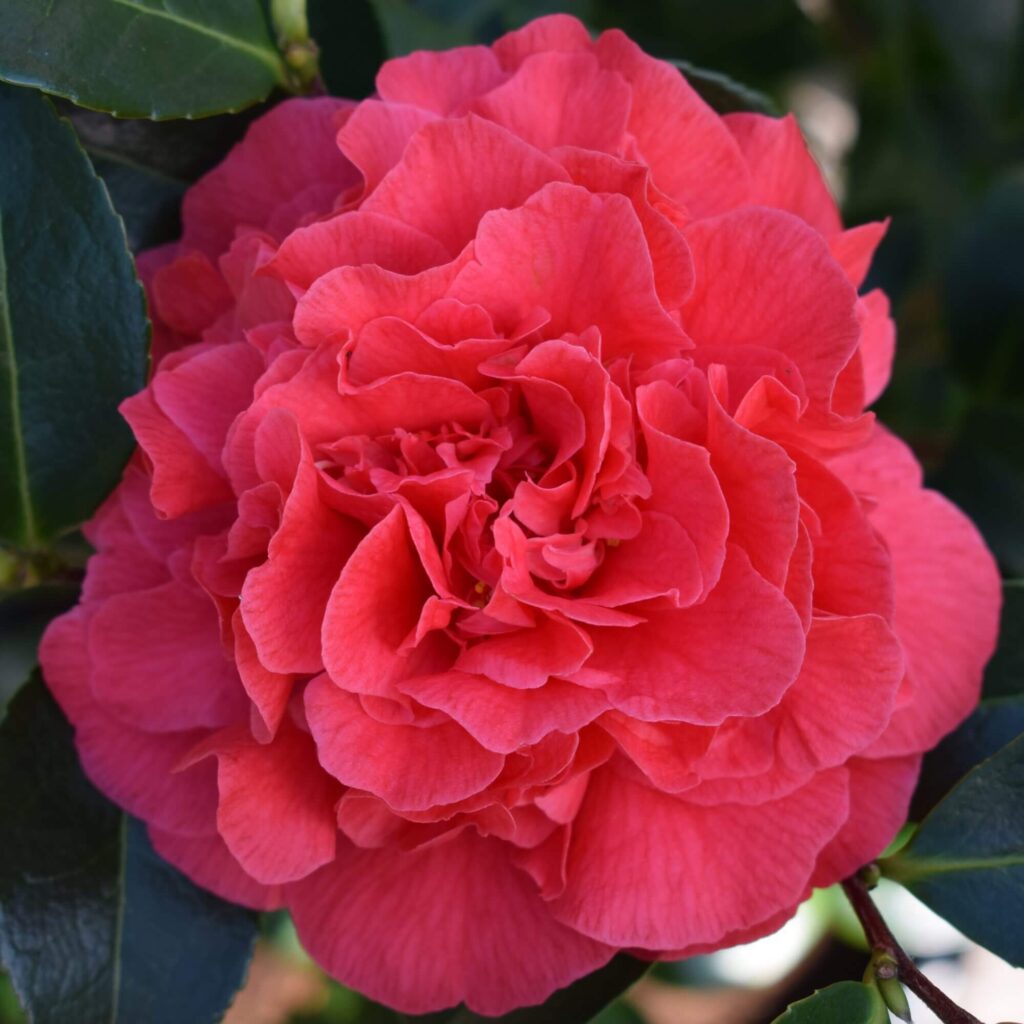
Preparing the Planting Site
When selecting a location to grow camellias, opt for a spot that offers partial shade, as these conditions are ideal for their growth and development. It’s crucial to ensure that the chosen area has well-draining soil to avoid waterlogging, which can negatively impact the health of the camellias. Additionally, consider planting your camellias near trees or shrubs to provide them with natural wind protection and create a barrier against harsh weather conditions. Before planting, be sure to clear the site of any debris and weeds to establish a clean area for your camellias to flourish. These preparatory measures will contribute to the overall health and vitality of your camellias, setting the stage for successful growth in your garden.
Ideal Soil and Sunlight Requirements
Camellias thrive in organically rich soils that are high in humus, ensuring good drainage to prevent waterlogging. This is crucial as waterlogged soil can lead to root rot and other detrimental issues for the plants. They flourish in dappled sunlight or partial shade, especially during the hot summer months to avoid leaf scorching, which can impact their overall health. It’s important to avoid planting them in areas with direct, harsh sunlight, as it can lead to stress and reduced blooming. Additionally, proper air circulation is essential, so avoiding overcrowding and allowing space between plants for adequate sunlight penetration is key to promoting healthy growth and vibrant blooms.
Maintaining Proper Temperature and Humidity Levels
To grow camellias successfully, it’s crucial to maintain a moderate temperature range of 60-70°F (15-21°C) during the day, ensuring slightly cooler temperatures at night. Additionally, creating an ideal environment for camellias involves managing humidity levels between 40% and 60%, which can be achieved by using a humidifier if necessary. Furthermore, protecting camellias from strong winds is vital, as they can disrupt humidity levels and cause dehydration in the plants. This precaution also extends to closely monitoring indoor conditions during winter to ensure adequate humidity levels for indoor camellias, safeguarding their well-being during the colder months.
Optimal Growing Conditions
Camellias grow in acidic, well-draining soil with a pH level between 5.0 and 6.5, making it essential to test and adjust the soil as needed before planting. They require partial shade with protection from the intense afternoon sun for optimal growth, so selecting a location with these light conditions is crucial for their overall health. Maintaining consistent moisture levels in the soil is also crucial, as camellias prefer slightly moist but not waterlogged conditions to flourish. Additionally, applying a layer of organic mulch around the base of the plant helps retain moisture and regulate soil temperature, creating an ideal environment for healthy camellia growth. These measures ensure that the soil and light conditions are optimized to grow camellias successfully in your garden.
Best Practices for Planting Camellias
Before planting your camellias, it’s essential to prepare the soil diligently by incorporating organic matter such as compost or peat moss to enhance both drainage and fertility. Once planted, ensure to water your camellias consistently, especially during dry periods, to support the development of robust and healthy roots. When planting, be mindful not to bury the camellias too deeply – the top of the root ball should sit slightly above ground level for optimal growth. As spring approaches, make sure to apply a balanced fertilizer specifically designed for acid-loving plants to promote vibrant and luscious blooms. These steps will contribute to the overall health and flourishing beauty of your camellias.
Effective Watering and Fertilizing Methods
To encourage deep root growth and drought tolerance, it’s important to water camellias deeply and less frequently, allowing the soil to dry out between watering sessions. Employing a soaker hose or a drip irrigation system can effectively deliver water directly to the roots while minimizing moisture on the foliage, reducing the risk of fungal diseases. Established camellias benefit from a late winter or early spring application of slow-release fertilizer before new growth emerges, ensuring a steady supply of essential nutrients. If signs of nutrient deficiency, such as yellowing leaves, appear, consider supplementing with an acidic fertilizer to address the specific needs of the camellias and promote their overall health and vitality. These practices contribute to the successful cultivation and well-being of these beautiful flowering plants.
Planting and Care Techniques
When selecting a location to plant and grow camellias, it’s crucial to choose an area with well-draining soil and partial shade to provide the optimal conditions for their growth. Dig a planting hole that is twice as wide as the root ball but no deeper than the root ball itself, ensuring a suitable and spacious environment for the camellias to thrive. After planting, apply a layer of mulch around the base of the camellia to retain soil moisture and inhibit weed growth, promoting a healthier growing environment. Additionally, remember to prune the camellias after flowering to maintain their shape and encourage robust, vigorous growth, ensuring a flourishing and vibrant display in your garden.
Essential Pruning Techniques for Camellias
When pruning camellias, it’s crucial to use clean and sharp tools to ensure precise cuts that won’t cause unnecessary damage to the plant. Focus on removing crossing or rubbing branches to enhance air circulation and minimize potential disease issues, promoting overall plant health. It’s also important to utilize sterilizing solutions between each cut, especially when dealing with diseased branches, to prevent further infection and maintain the well-being of your camellias. Consider consulting a professional arborist for large-scale pruning projects or if you’re unsure about specific techniques for your camellia variety, ensuring the best care for your plants.
Year-round Maintenance Strategies
Incorporating regular watering schedules, mulching, and fertilization into your year-round maintenance routine is essential for nurturing healthy, vibrant camellias. Additionally, it’s crucial to monitor for common pests such as aphids or scale insects and address any infestations promptly using appropriate horticultural oils or insecticidal soaps to maintain the well-being of your plants. During extreme weather conditions, protecting camellias by covering them with breathable materials or relocating potted plants indoors as needed can safeguard them from potential harm. Furthermore, performing a thorough inspection of your camellias every season will enable you to detect any signs of nutrient deficiencies or environmental stress, allowing you to adjust care practices accordingly for the optimal health and vitality of your camellias.
Pruning and Maintenance Tips
Regular pruning is essential to grow camellias successfully. It’s important to remove any dead or diseased branches to prevent the spread of pests and diseases within the camellia shrub. Pruning immediately after flowering not only helps in shaping the plant but also encourages new growth for the following season. In addition, it’s crucial to inspect the camellia regularly for signs of overgrowth or tangled branches, and trim as needed to maintain an open, airy structure, allowing for optimal air circulation and sunlight penetration. These pruning practices contribute to the overall well-being and visual appeal of the camellia shrub.
Identifying Common Camellia Pests
When learning to grow camellias, it’s essential to stay vigilant for signs of pest infestations. Look for sticky honeydew residue on the leaves, which can indicate the presence of sap-sucking pests such as aphids or scale insects. Additionally, inspect the undersides of the camellia leaves for fine webbing, a clear sign of spider mite infestation that can lead to discoloration and leaf drop. Keep an eye out for distorted or discolored foliage, as these may be indications of thrips or other common pests affecting camellias. Furthermore, observe any black sooty mold on the leaves, often a result of honeydew secreted by certain pests like scale insects. Being proactive in identifying and addressing these issues will help maintain the health and beauty of your camellia plants.
Preventive Measures and Natural Remedies for Diseases
To promote optimal health and to grow camellias successfully, it’s important to prioritize air circulation and spacing to prevent fungal diseases like powdery mildew and leaf spot. Additionally, avoiding over-fertilization is key, as excessive nitrogen can make camellias more susceptible to issues such as root rot. If fungal diseases do arise, consider using a natural remedy like a solution of baking soda and water to control powdery mildew without causing harm to the plants. Furthermore, maintaining clean gardening tools and implementing practices like avoiding overhead watering can significantly minimize the risk of spreading diseases among your camellias, ensuring their well-being and vitality.
Conclusion
In conclusion, learning how to grow camellias successfully involves various essential factors, from understanding different species and selecting the right variety to meeting optimal growing conditions and implementing effective planting and care techniques. Pruning and maintenance play a crucial role in promoting healthy growth and preventing the spread of pests and diseases. Regular inspection for common pests and diseases, along with proactive preventive measures and natural remedies, is key to maintaining the health and vitality of camellia plants. By incorporating these practices, gardeners can enjoy vibrant, thriving camellias while fostering a balanced and eco-friendly garden environment.
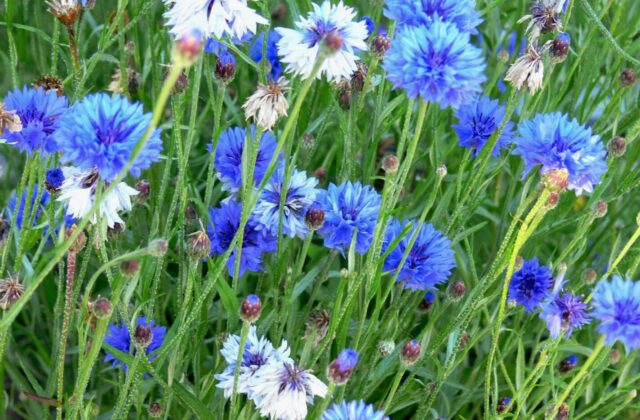
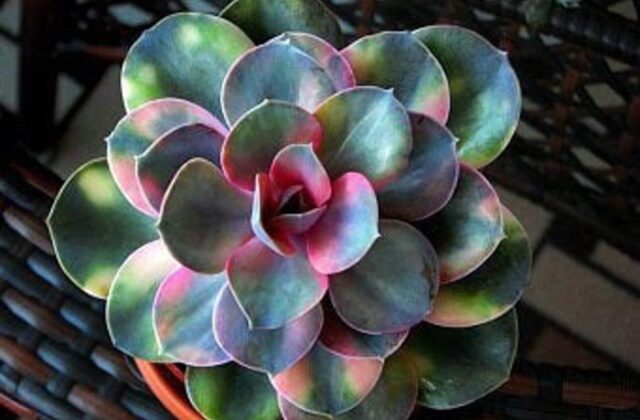
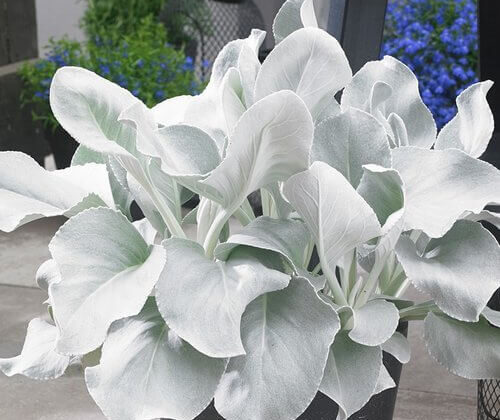
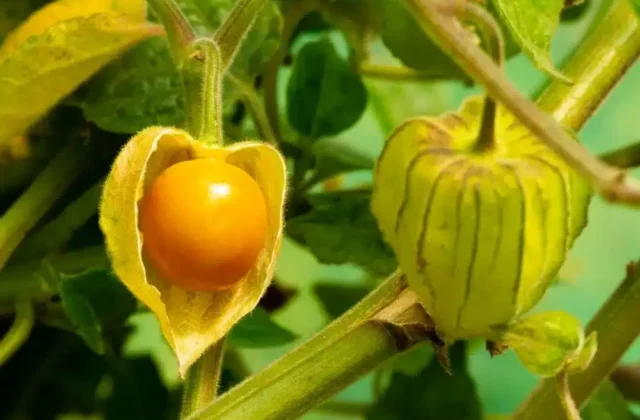
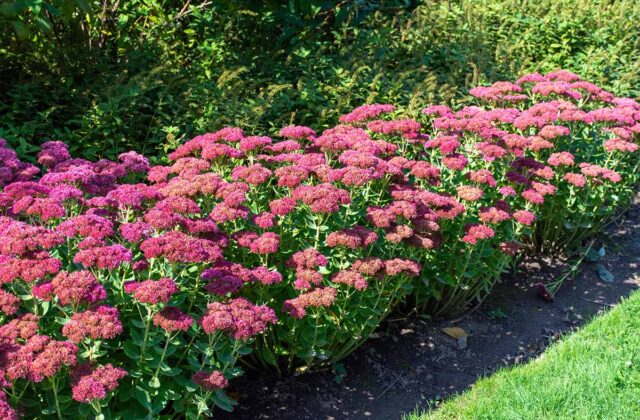
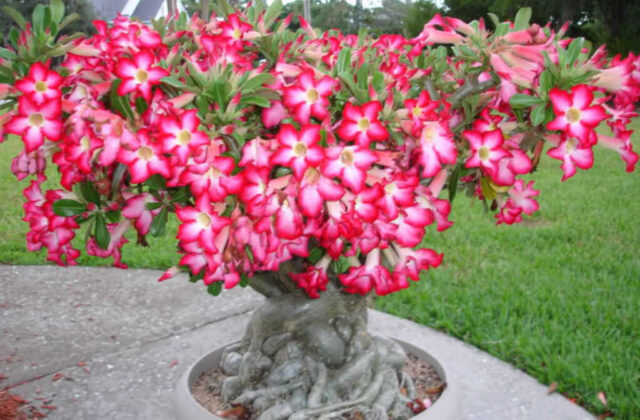
54 comments
What’s up to every body, it’s my first visit of this web site; this weblog contains awesome and truly excellent information in support
of visitors.
Also visit my site: vpn special
Howdy! I just would like to offer you a big thumbs up
for your great info you have got right here on this post. I’ll be coming back to your web site for more soon.
Also visit my webpage: vpn special coupon code 2024
Hi there, I check your blog regularly. Your story-telling style is witty, keep up the good work!
Take a look at my site; vpn special coupon code 2024
It’s amazing in favor of me to have a web page, which is beneficial in support of my knowledge.
thanks admin
My web blog; vpn special coupon code 2024
I am really inspired together with your writing skills
as neatly as with the layout in your blog. Is that this a paid theme or did you modify it
yourself? Either way keep up the nice high quality writing, it’s rare to look a great blog like this
one nowadays..
Look at my page :: vpn special coupon code 2024
Good info. Lucky me I reach on your website by accident, I bookmarked it.
Hello just wanted facebook vs eharmony to find love online give you
a brief heads up and let you know a few of the pictures
aren’t loading properly. I’m not sure why but I think its a linking issue.
I’ve tried it in two different web browsers and both show the
same results.
child teen porn
Way cool! Some extremely valid points! I appreciate you writing this article
plus the rest of the site is also very good.
Look at my site eharmony special coupon code 2024
Informative article, totally what I wanted to find.
my web-site; nordvpn special coupon code 2024
You have remarked very interesting points! ps decent web site. “High school is closer to the core of the American experience than anything else I can think of.” by Kurt Vonnegut, Jr..
That is the precise blog for anyone who desires to seek out out about this topic. You understand so much its virtually exhausting to argue with you (not that I actually would want…HaHa). You undoubtedly put a new spin on a topic thats been written about for years. Great stuff, simply great!
I do not even know how I ended up here, but I thought this post was great. I don’t know who you are but definitely you’re going to a famous blogger if you are not already 😉 Cheers!
I have been absent for a while, but now I remember why I used to love this site. Thank you, I?¦ll try and check back more frequently. How frequently you update your website?
I keep listening to the news update lecture about getting free online grant applications so I have been looking around for the best site to get one. Could you tell me please, where could i find some?
You have observed very interesting points! ps nice website .
I have been exploring for a little bit for any high quality articles or weblog posts on this sort of area . Exploring in Yahoo I finally stumbled upon this site. Reading this info So i’m glad to show that I’ve an incredibly excellent uncanny feeling I found out just what I needed. I so much definitely will make certain to don’t omit this website and provides it a look regularly.
As a Newbie, I am constantly browsing online for articles that can aid me. Thank you
I am glad to be one of several visitors on this great website (:, thanks for putting up.
Of course, what a magnificent site and revealing posts, I definitely will bookmark your blog.All the Best!
You could certainly see your expertise in the work you write. The world hopes for even more passionate writers like you who are not afraid to say how they believe. Always go after your heart.
It is a pleasure to read this weblog, thanks to its up-to-date information and interesting posts. Look into my web page Webemail24 for some really good points and find out more about Search Engine Optimization.
hello!,I like your writing so a lot! percentage we keep in touch extra approximately your post on AOL? I require a specialist in this house to solve my problem. Maybe that is you! Taking a look forward to peer you.
I truly appreciate this post. I?¦ve been looking all over for this! Thank goodness I found it on Bing. You’ve made my day! Thx again
I would like to thank you for the efforts you have put in writing this blog. I’m hoping the same high-grade web site post from you in the upcoming also. Actually your creative writing abilities has inspired me to get my own blog now. Really the blogging is spreading its wings fast. Your write up is a good example of it.
Hiya, I’m really glad I have found this info. Nowadays bloggers publish just about gossips and net and this is really annoying. A good site with interesting content, this is what I need. Thanks for keeping this web site, I’ll be visiting it. Do you do newsletters? Can’t find it.
Good write-up, I’m regular visitor of one’s blog, maintain up the nice operate, and It is going to be a regular visitor for a long time.
Thanks for sharing superb informations. Your web-site is very cool. I am impressed by the details that you’ve on this website. It reveals how nicely you perceive this subject. Bookmarked this website page, will come back for more articles. You, my pal, ROCK! I found just the information I already searched all over the place and just could not come across. What an ideal site.
I was very pleased to find this web-site.I wished to thanks to your time for this wonderful read!! I undoubtedly enjoying every little little bit of it and I’ve you bookmarked to take a look at new stuff you blog post.
Some really nice and utilitarian info on this web site, too I believe the style has superb features.
Would you be excited by exchanging links?
I like this web blog very much, Its a really nice office to read and receive information.
I precisely desired to say thanks yet again. I’m not certain the things that I could possibly have tried in the absence of the entire thoughts discussed by you regarding such a situation. It had become a real alarming issue in my position, but considering this professional tactic you solved that took me to cry over delight. I’m just grateful for the work and sincerely hope you know what a powerful job your are doing training some other people all through a web site. More than likely you haven’t got to know any of us.
Very nice info and right to the point. I don’t know if this is truly the best place to ask but do you people have any thoughts on where to hire some professional writers? Thanks 🙂
I am commenting to let you understand what a fantastic encounter my friend’s daughter experienced viewing your web page. She came to understand several details, which include how it is like to have an awesome giving heart to get many people just know some complex subject matter. You undoubtedly exceeded people’s desires. I appreciate you for rendering the informative, dependable, explanatory and even cool tips on your topic to Evelyn.
You are my inhalation, I possess few blogs and rarely run out from to post .
I have read a few good stuff here. Definitely worth bookmarking for revisiting. I surprise how much effort you put to make such a fantastic informative site.
I’d have to examine with you here. Which is not one thing I usually do! I take pleasure in reading a post that may make folks think. Additionally, thanks for permitting me to comment!
Great write-up, I am regular visitor of one?¦s website, maintain up the nice operate, and It is going to be a regular visitor for a lengthy time.
This is really interesting, You are a very skilled blogger. I’ve joined your feed and look forward to seeking more of your wonderful post. Also, I’ve shared your web site in my social networks!
My site Article Star covers a lot of topics about Website Design and I thought we could greatly benefit from each other. Awesome posts by the way!
I am curious to find out what blog system you’re utilizing? I’m having some minor security issues with my latest site and I’d like to find something more secure Do you have any recommendations?
Very interesting topic, regards for posting.
Thank you for sharing excellent informations. Your web site is very cool. I’m impressed by the details that you¦ve on this web site. It reveals how nicely you perceive this subject. Bookmarked this web page, will come back for more articles. You, my friend, ROCK! I found simply the info I already searched everywhere and simply couldn’t come across. What a great site.
Hi, Neat post. There is a problem with your website in internet explorer, may test this?K IE nonetheless is the market chief and a big component of other people will miss your excellent writing because of this problem.
Some really interesting info , well written and broadly user friendly.
Appreciating the hard work you put into your blog and detailed information you provide. It’s good to come across a blog every once in a while that isn’t the same out of date rehashed material. Great read! I’ve bookmarked your site and I’m including your RSS feeds to my Google account.
I’ve been absent for some time, but now I remember why I used to love this blog. Thank you, I¦ll try and check back more often. How frequently you update your web site?
Your point of view caught my eye and was very interesting. Thanks. I have a question for you.
Hi my friend! I wish to say that this post is amazing, great written and come with approximately all important infos I would like to see more posts like this
You mean Sphinx?
Thanks for sharing. I read many of your blog posts, cool, your blog is very good.
hey there and thank you for your info – I have certainly picked up something new from right here. I did however expertise several technical points using this site, since I experienced to reload the site many times previous to I could get it to load properly. I had been wondering if your web hosting is OK? Not that I’m complaining, but slow loading instances times will often affect your placement in google and can damage your high quality score if advertising and marketing with Adwords. Well I’m adding this RSS to my email and can look out for much more of your respective interesting content. Ensure that you update this again very soon..
Regards for this post, I am a big fan of this website would like to go along updated.